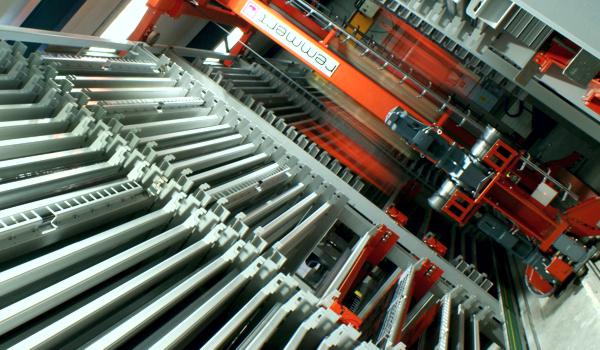
Laser cutting sheet metal offers a flexible and efficient profiling option with superior cut-edge quality, parallel sides and no burrs.
Laser cutting offers supreme flexibility, handling profiles from the simplest of components to shapes of almost limitless complexity. So how does it work?

Put simply a high-energy infra-red laser light beam is directed onto the material. A focusing lens is used to concentrate all of the energy onto a pin-point sized spot, causing rapid localised melting and partial vaporisation of the material. An assist gas, such as oxygen or nitrogen is then directed through a nozzle to expel the molten material.

The position of the laser beam is precisely controlled by computer program – also known as CNC code – driving the X and Y axes of the CNC machine. The CNC computer or controller adjusts the power of the laser beam dynamically to ensure that that the laser power is optimised for the current cutting speed.

The narrow laser cut width, zero clamping strip and computer-assisted part nesting allows maximum material utilisation. Programs can be prepared very quickly from industry standard DXF or DWG CAD drawings. An industrial flatbed laser can typically cut any 2-dimensional shape with accuracy as low as 0.1mm. Coupled with short lead times and zero tooling costs, laser cutting is a highly attractive and economical means of profiling sheet metal and plate.

Thin sheet metal can be cut particularly quickly with fiber lasers as the shorter infra-red light wavelength of 1.07µm provides extremely high power density in the cutting zone and thus achieves outstanding efficiency. In short, the energy input into the metal is higher compared to that with CO2 lasers (which have an infra-red light wavelength of 10.6µm) and so the cutting speed is faster.
High-performance fiber lasers have a modular design where the source is made up of multiple fiber modules. Each module has a number of laser diodes which “pump” the “active fiber” and generate a laser beam. These laser modules are grouped together and the combined laser beam is then guided via a flexible fiber optic cable from the laser source to the processing head of the laser cutting system.

Laser cutting tube is a highly productive and flexible method of tube processing, with machines designed both to cut hole profiles and end profiles (mitres or cod mouths) on round, square, oval, triangular and other special section tubes. Accurate laser cutting of highly complex shapes within the tube is possible.

Sheet metal fabricator Hydram Sheet Metalwork’s laser cutting and punching machines are all connected to tower storage systems with 3 metre x 1.5 metre sheet metal capacity to provide automated loading and unloading. The Remmert tower system for Hydram’s Fiber machines enables full automation, with both laser cut part and scrap removal, allowing unmanned operation. Automation systems such as these allow laser cutting machines to maximise productivity.

Hydram Sheet Metalwork’s CNC laser cutting service offers a fast, flexible and economical means of precision sheet metal cutting and plate profiling. Hydram can laser cut up to 20 mm thick mild steel, “clean cut” up to 12mm thick in stainless steel and 10mm in aluminium.
The sheet metal fabricator bought its first CNC laser machine in 1997 (pictured) and has continually upgraded its capabilities to keep up with technological advances.